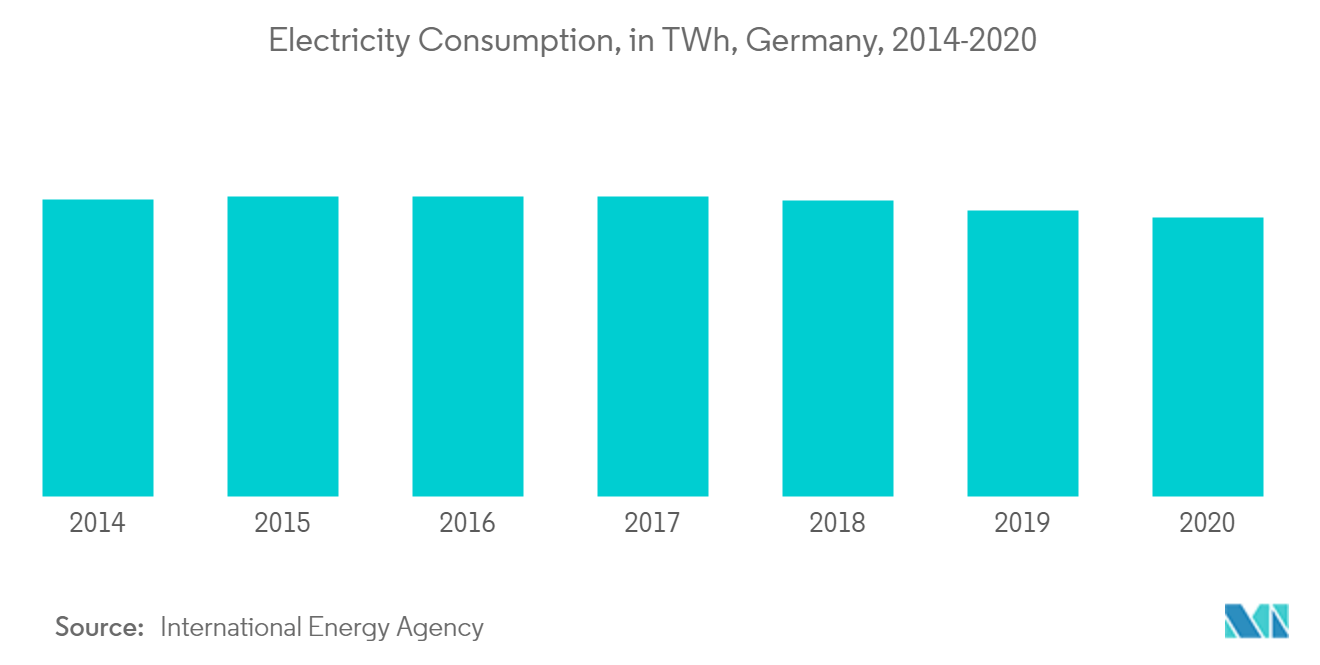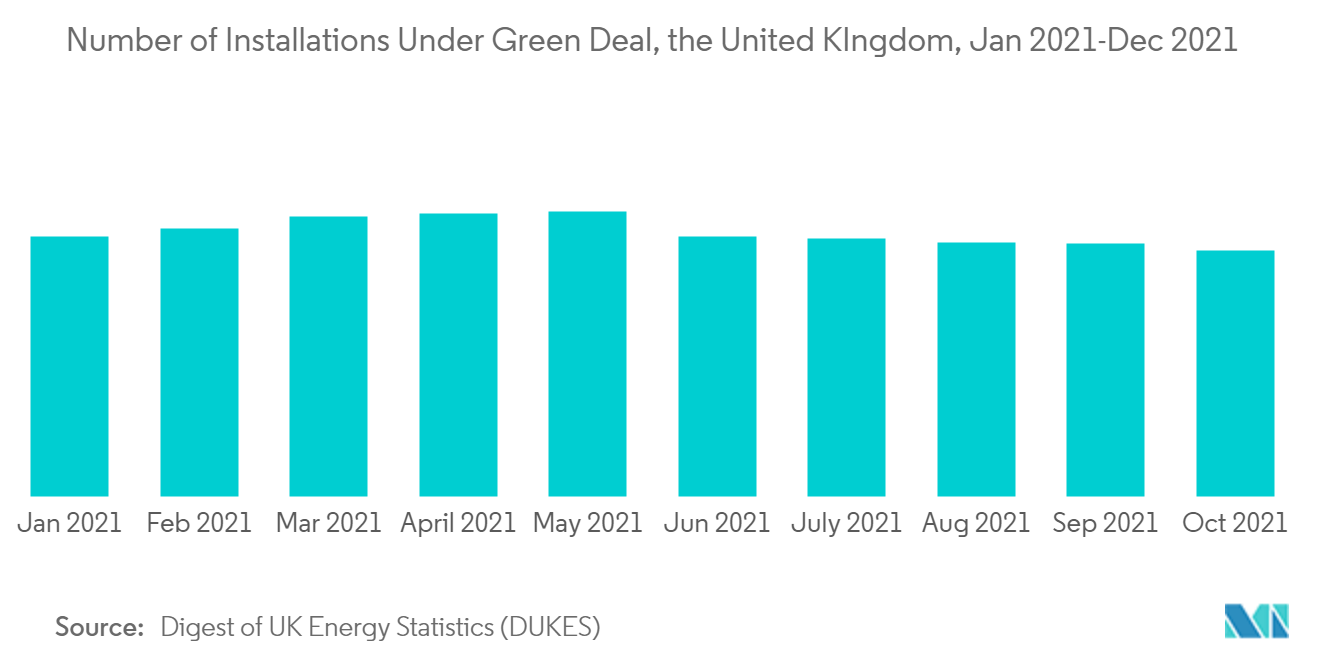Market Trends of European Building Energy Management Systems Industry
This section covers the major market trends shaping the European Building Energy Management Systems Market according to our research experts:
The Residential Sector Expected to Drive the Market
- The high energy consumption, particularly due to heating devices, lighting, and other electrical and mechanical devices, has made the sector highly conscious of energy savings. Specifically, during winters, when everything from pins to cars becomes so expensive, the homeowners look for strategies like BEMS devices which help them to reduce energy costs by monitoring the consumption trends.
- In Germany, the cumulative electricity demand reduced in 2020, from around 548 TWh in 2019 to 535TWh in 2020, but the household sector forms a considerable share of 26% in the consumption portfolio. The growing awareness about the technology in the residential market has made the companies introduce new products in the BEMS division to comply with end users' demands.
- In January 2021, Schneider Electric, the global leader in digital technologies, launched the next-generation residential electrical panel for the European market (the Wiser Energy Center) at the CES event. The innovative product has the capability to monitor all the energy needs of the connected electrical devices, making a sustainable smart home for the owners.
- In August 2021, the smart solutions provider Planet Idea and Italian Energy Systems Research institute RSE planned to launch a project to determine the potential of connected home appliances to provide flexibility to the grid.
- Thus, such kinds of developments are expected to drive the market in the European region.

The UK Expected to Drive the Market
- In 2021, the energy savings among British families were recorded as 33%. Not only the residential sector but the industrial sector also adopted numerous measures to make the systems energy-efficient and reduce their operational costs.
- The other major driver for the BEMS market of the United Kingdom is the construction industry, which has been growing at the fastest rate in the country in the last 24 years.
- The Government of the United Kingdom passed many legislations to conserve energy and reach the goal of net-zero carbon in the country. In August 2020, the Council of Science and Technology recommended a systems approach for achieving net-zero carbon emissions by 2050. The approach exclusively highlights technology improvements in the energy sector to make an informed decision by data analysis and effective reporting structure.
- In 2020, the British government had set a plan for the "Green Industrial Revolution", which focused on net-zero decarbonization goals to be achieved by 2050, policies to reduce emissions in each sector, and cross-cutting actions to support the transition. The initiative will lead to more vigilance on energy consumption in each sector.
- Furthermore, the country has energy conservation schemes for buildings and houses. Green deal is one the prominent one, that helps to make energy-saving for homes by uses of renewable energies like solar. In September 2021, around 1100 installations were done in the United Kingdom.
- Owing to such developments, it is predicted that the United Kingdom is expected to dominate the market during the forecast period.


